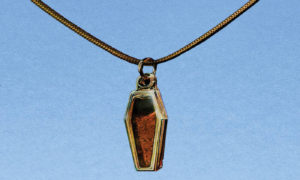Having completed my third SXSW in as many years as living in Austin, I feel seasoned in my authority on the subject. Perhaps not quite marinated enough and certainly not smoked to the point of Franklin’s BBQ, but my experiences are juicy and flavorful with highs and lows. I’ve been bombarded and barricaded, ushered and Uber-ed, delivered and defeated. This is my SXSW glean for 2015.
This year SXSW was different. Local Austinite  Andy Langer wrote two articles, one before and one after, about SXSW 2015 and he agrees, promising SXSW to be a “transitional” year and to be “smaller and more manageable.” He was right. This year’s lines weren’t so bad for us wristbanders. We bumped shoulders with enough badgeholders to scoff at the exorbitant cost for the “same” access. Day parties were reduced. Fewer massive acts performed. Doritos was replaced with McDonald’s.
Andy Langer wrote two articles, one before and one after, about SXSW 2015 and he agrees, promising SXSW to be a “transitional” year and to be “smaller and more manageable.” He was right. This year’s lines weren’t so bad for us wristbanders. We bumped shoulders with enough badgeholders to scoff at the exorbitant cost for the “same” access. Day parties were reduced. Fewer massive acts performed. Doritos was replaced with McDonald’s.
My SXSW 2015 was about representation and more voices heard, getting back to the festival’s organic intentions. Granted,  some can claim fewer big names means fewer industry folks and such, but as your dear correspondent, I was thrilled to see a ton of new bands in a span of time that is challenged by few other weeks/festivals in the year. To be more specific, female artists are what SXSW 2015 was about for me. Langer wrote that, “SXSW’s biggest names and biggest showcases are now hip-hop oriented,” and he may be right. But more important was the female representation that made a lasting effect on me, and I hope, more generally for the masses, it becomes less of a point to be made and more of a natural expectation.
some can claim fewer big names means fewer industry folks and such, but as your dear correspondent, I was thrilled to see a ton of new bands in a span of time that is challenged by few other weeks/festivals in the year. To be more specific, female artists are what SXSW 2015 was about for me. Langer wrote that, “SXSW’s biggest names and biggest showcases are now hip-hop oriented,” and he may be right. But more important was the female representation that made a lasting effect on me, and I hope, more generally for the masses, it becomes less of a point to be made and more of a natural expectation.
 If anybody saw all the young *cough* millenials at this year’s festival, it’s because the times are a-changing, son. It means a greater representation of diversity in the acts we see, more accessibility for women and other minorities to perform and be discovered. Girlpool, Hinds, Chastity Belt, La Luz, and Waxahatchee are all young bands composed entirely of women and some women of color. But what is important is that these bands are all playing high-profile stages, billed alongside other big names and without consideration regarding their gender. Bands like Heart or the Bangles were almost novelties. Moving into the 90s, Riot Grrrls were criticized for not being inclusive. Today we stand casually with one another.
If anybody saw all the young *cough* millenials at this year’s festival, it’s because the times are a-changing, son. It means a greater representation of diversity in the acts we see, more accessibility for women and other minorities to perform and be discovered. Girlpool, Hinds, Chastity Belt, La Luz, and Waxahatchee are all young bands composed entirely of women and some women of color. But what is important is that these bands are all playing high-profile stages, billed alongside other big names and without consideration regarding their gender. Bands like Heart or the Bangles were almost novelties. Moving into the 90s, Riot Grrrls were criticized for not being inclusive. Today we stand casually with one another.
Beside all-female groups, Courtney Barnett, Bully, and Speedy Ortiz are bands lead by women that are capturing more hype than I’ve seen in the past. Or maybe more accurately it seems I naturally gravitated to female-oriented bands, which leads me to believe there is a natural swing occurring in the general tastes of blogs and music purveyors. Obviously, the days of white-guy bands are not over. They won’t ever be. But to utilize the true essence of feminism, that’s never the intention. We feminists want equality for all and equity for the voices that don’t have the same volume when given the same chance. What is going on around us that makes this happen? Why does it *all of a sudden* feel so natural? I hope we are breaking through the suppression of this talent pool and developing our second-nature feminism into first-nature intrinsic expectation.
the past. Or maybe more accurately it seems I naturally gravitated to female-oriented bands, which leads me to believe there is a natural swing occurring in the general tastes of blogs and music purveyors. Obviously, the days of white-guy bands are not over. They won’t ever be. But to utilize the true essence of feminism, that’s never the intention. We feminists want equality for all and equity for the voices that don’t have the same volume when given the same chance. What is going on around us that makes this happen? Why does it *all of a sudden* feel so natural? I hope we are breaking through the suppression of this talent pool and developing our second-nature feminism into first-nature intrinsic expectation.
Despite the recent brand-heavy chaotic trajectory SXSW has taken the past few years, it continues to prove to be an indispensable part of Austin that reflects the bold moves a city can make to exhibit the ever-inspiring citizens of the world.
All photographs © Lukas R. Truckenbrod & Pop Press International; all rights reserved. Click any image to open in slideshow viewer.























